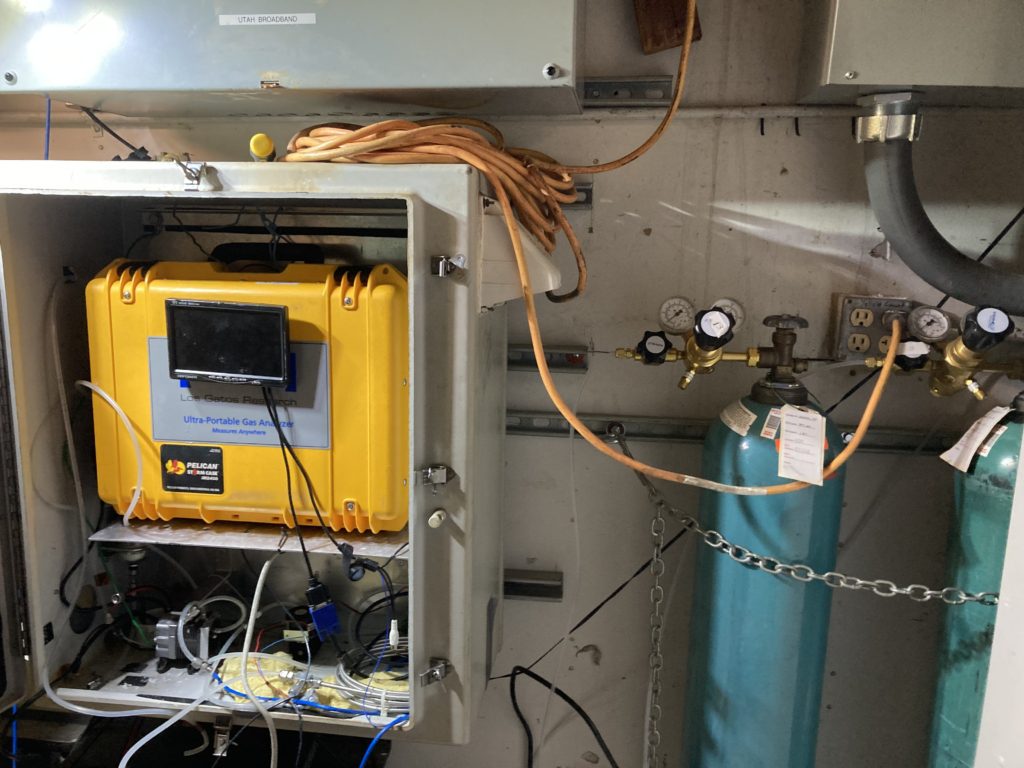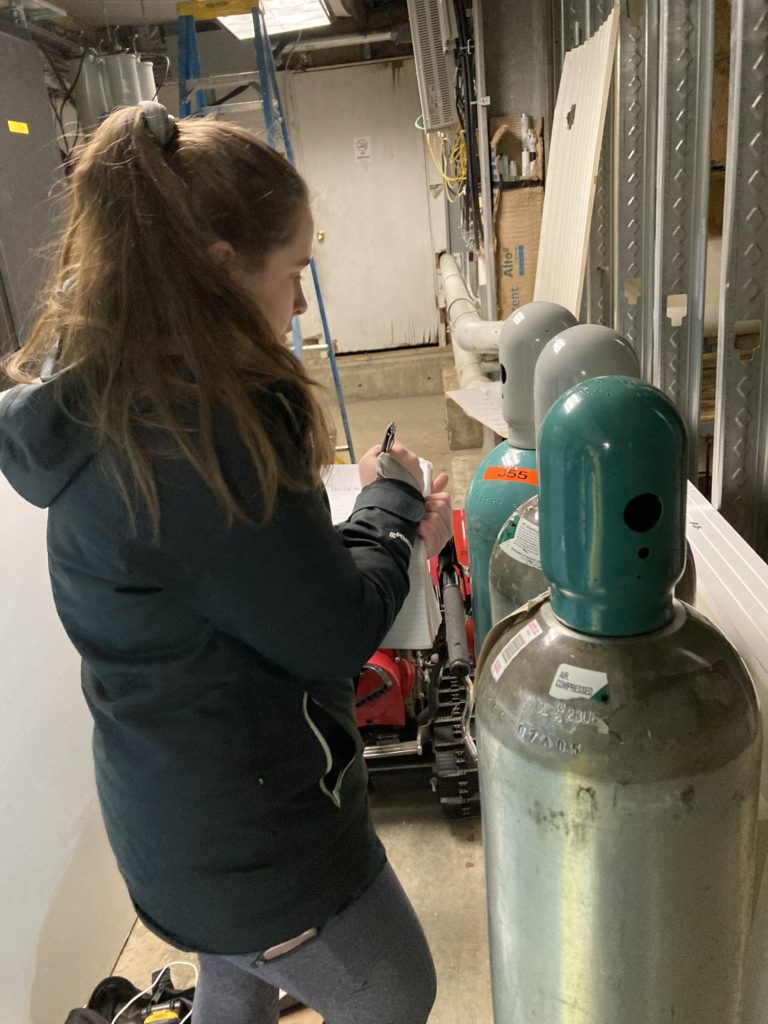Riding the tram at Snowbird and pouring out onto the summit with your skis in hand and powder turns in mind it’s easy to miss just what’s around us. When you next step through those new doors take a moment and look up before you clear the gates. There, between the tram wheels you’ll see a number of instruments and antennae on top on the west side. To help make sense of some of those items Canyon Blog tracked down Dr. Maria Garcia from the University of Utah’s Atmospherics Sciences Dept.

Turns out that there’s some serious science goin’ on up there. Dr. Garcia and her team measure methane, carbon dioxide, and water vapor to track changes in the global atmosphere. To do that isn’t as simple as it might sound. To ensure their instruments are calibrated they keep steel tanks of ambient air captured from the valley as known values (don’t ask) but they serve as a baseline for the actual measurement by the equipment. This sits (with the air tanks) in the downstairs area between the two tram car stations.

Every three hours for 90 seconds the system checks the tanks to ensure calibration. The readings from the atmosphere collected from the rooftop, however, continue unabated in real time. The captured data is available to any scientist around the world or even to the public and is used for tracking changes in global methane levels.

Watching Dr. Garcia, graduate student Nic, and science technician Megan at work is to see the commitment of scientists in action. It’s not taking place at the speed of downhill skiing, but it’s how we learn over time more about the world we’re fortunate enough to sit upon. The station has been in operation on Hidden Peak for two decades now.

When asked by your correspondent what she’s noted about atmospheric greenhouse gas levels in her long and distinguished career her response was, “Well, these levels are all only going in one direction, up.”
